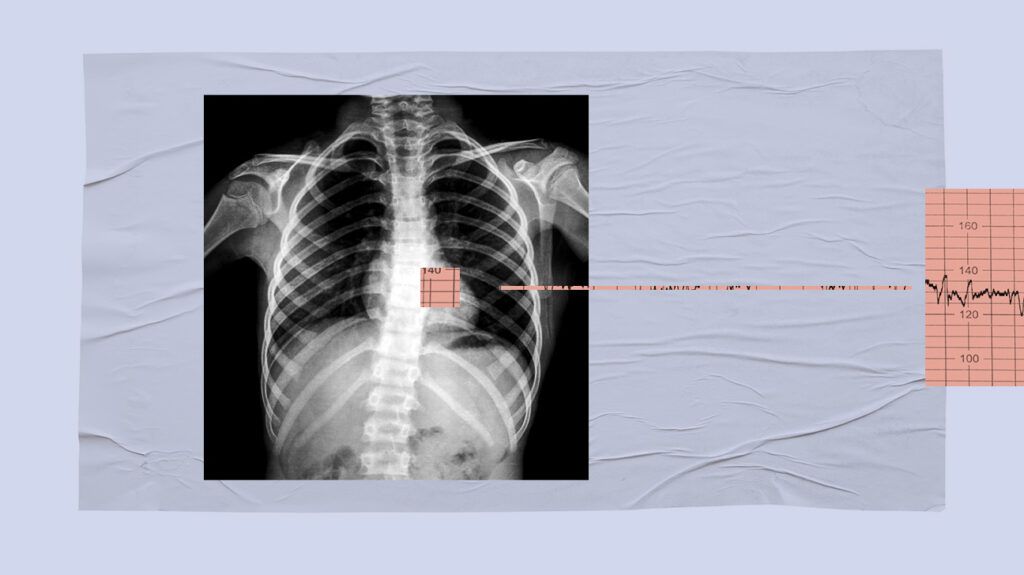Transmyocardial revascularization is a procedure that uses lasers to improve blood flow in the arteries that feed the heart. It may help people who have severe forms of coronary artery disease. However, evidence for its effectiveness is limited.
Revascularization is a procedure that aims to restore blood flow to tissues or organs. When doctors use this procedure to improve blood flow to the heart muscles, it is called coronary revascularization.
Coronary artery bypass grafting (CABG) and percutaneous coronary intervention (PCI) with stenting are the most common types of revascularization.
Transmyocardial revascularization (TMR) is an uncommon revascularization procedure. Doctors use it for coronary artery disease that is not effectively treated with CABG or PCI.
This article looks at the purpose of TMR. It also explains the procedure’s steps, its effectiveness, and how to prepare and recover.

Doctors may perform TMR to manage severe cases of coronary artery disease. This is when the arteries feeding the heart have become narrow.
According to a
Diffuse coronary artery disease is when large portions of the coronary arteries have a high buildup of plaque. This plaque causes stiffer and narrower arteries, which can cause or worsen heart problems.
Without treatment, diffuse coronary artery disease
The 2018 review estimates that around 3% of people with this condition cannot receive more traditional revascularization treatments.
The following are steps a person will experience during TMR surgery:
- Before heart surgery, medical staff
place an intravenous (IV) line into the patient’s blood vessel. This is usually located in the arm or chest. The IV supplies the patient with fluids and any necessary medication. - Medical staff may also shave and wash the incision area, then place the patient under general anesthesia.
- A surgeon will
make an incision on the left side of the chest to expose the patient’s heart. - The surgeon will then use a laser to create a series of small holes. These go from the outside of the heart into the heart’s pumping chambers.
The holes stimulate the growth of new blood vessels. These help bring oxygen to the heart muscle and destroy the nerves responsible for chest pain.
In certain cases, doctors will combine TMR with bypass surgery. This involves grafting a healthy blood vessel onto a blocked or narrowed coronary artery.
Coronary arteries supply blood to the heart. As the name suggests, this graft creates a bypass through which blood can flow more easily.
According to the
Such tests may include:
- cardiac catheterization with coronary angiography
- echocardiography
- stress tests to measure heart function during physical stress
- imaging tests, such as:
- coronary computed tomography angiogiography (CTA) scan
- chest X-ray
- cardiac magnetic resonance imaging (MRI)
- carotid ultrasound
- nuclear heart scan
- electrocardiogram (ECG or EKG)
What to discuss with a doctor
Preparatory steps can vary from person to person. Anyone undergoing TMR should discuss the following points with their doctor:
- how long before surgery to stop eating or drinking
- whether to stop certain medications before surgery
- how long the surgery will take
- how much pain to expect after surgery and how to manage it
- how long they may need to stay in hospital after surgery
- the details of potential cardiac rehabilitation programs
- how long to wait before resuming work and other activities
As the
After their stay in the ICU, a person may remain in the hospital for close monitoring. Healthcare professionals may monitor a person’s:
- heart rate
- blood pressure
- breathing
- incision site
Upon leaving the hospital, it may take some time for people to feel fully recovered. The following steps can contribute to a faster and longer-lasting recovery:
- maintaining a healthy lifestyle
- taking appropriate medications
- attending regular follow-up appointments
- participating in cardiac rehab
Potential complications
The following are
- heart attack
- ventricular arrhythmia, which causes an abnormally fast heartbeat
- atrial fibrillation, an irregular heartbeat
- left ventricular dysfunction
- heart failure
- stroke
- pneumonia
- sepsis
- infection
TMR is typically a last resort procedure for people who cannot receive other types of revascularization.
According to a
However, symptoms of diffuse coronary artery disease can continue even after treatment for some people.
Transmyocardial revascularization (TMR) is a surgical procedure that can help treat diffuse coronary artery disease and angina. It involves using lasers to create channels in the heart muscle and improve blood flow.
Recovery from TMR may include time in the ICU, close monitoring, and maintaining a healthy lifestyle. Potential complications include heart attack and infection, especially in people with other serious health conditions.
Further research is necessary to determine the effectiveness of TMR. However, current research suggests it has better outcomes than certain medical therapies.
